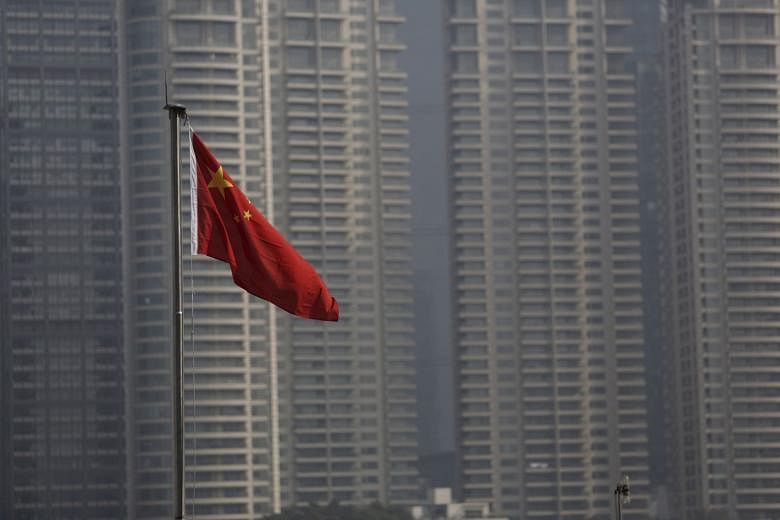MANILA (PHILIPPINE DAILY INQUIRER/ASIA NEWS NETWORK) - Before 1998, Asian leaders would always ask: "What does Washington think?"
Today, their first question is: "What does Beijing think?"
Over the recent holidays, I received a number of books from friends and relatives. Gigi Abaya Carlos gifted me with two books: "Weeded," a collection of reflections by Ateneo president Jose Ramon Villarin, SJ, and "Europe by Scooter," written by her brother Antonio C. Abaya.
In 1961, a "young and poor" Tony Abaya set out to see much of Europe on a US$300 (S$406) apple-green-Vespa motor scooter.
He traveled over 17,752 kilometers, visiting 13 countries in six months while staying at youth hostels or with friends.
The scooter suffered only three flat tires and one broken clutch cable during the entire trip.
Of his fantastic journey, Tony wrote: "I met Europe as I wanted to meet it, not just through the usual clichés of ruins, cathedrals and department stores, but also through the timeless beauty of its countryside, the hospitality of its people, and the civilized company of its educated youth."
After my stint in Jakarta, I was appointed administrator of the Export Processing Zone Authority (forerunner of the Philippine Economic Zone Authority today).
I invited Tony for lunch at one of the restaurants near my office along Roxas Boulevard. I told him how much I enjoyed reading his columns. We were not always on the same wavelength, but when you sit down with Tony, you realise there is so much to learn from him.
Two brothers sent me their Christmas presents separately.
Both gifts were books.
Both books had the same title: "Destined for War," by Graham Allison. I have not broken the news to them.
The book, a terrific read by Allison, former dean of the Kennedy School at Harvard, dwells on the conflict between a rising power China, and the dominant ruler, the United States, and the potential for another worldwide catastrophe.
Allison points out that the book is not about China, but for today's column I wish to focus on China as "The biggest player in the history of the world," the title of one of its chapters.
Many Filipinos, like most Americans, believe that America remains No. 1 in the world, and that China could never replace the United States as the world's largest economy or even become the world's No. 1 superpower.
In his national security course at Harvard, Allison begins by asking his students to compare China and the United States in 1980 with current (2015) rankings.
The students are shocked.
In 1980, China's GDP was less than US$300 billion; by 2015, it was US$11 trillion.
In 1980, China's trade with the outside world amounted to less than US$40 billion; by 2015, it had increased one hundredfold to US$4 trillion.
Another question for his class was: When might the United States actually find itself No. 2?
The students are stunned to learn that on most indicators, China has already surpassed the United States and since 2008, China has served as the primary engine of global economic growth.
In 2014, at the International Monetary Fund/World Bank meeting in Washington, DC, the IMF issued its annual report on the global economy.
The news headline said it all: "America is now No. 2."
The IMF estimated the size of the US economy at US$17.4 trillion while China's economy was US$17.6 trillion.
The IMF had measured China's GDP using as criterion, purchasing power parity or PPP, "the standard now used by major institutions whose professional responsibilities require them to measure national economies."
The previous standard for measuring GDP was market exchange rates.
In the field of healthcare and education, indicators show significant improvements in the wellbeing of the Chinese people.
In 1949, life expectancy was 36, and 8 out of 10 could not read or write. By 2014, life expectancy more than doubled to 76, and 95 per cent of the people were literate.
In 2015, according to the US News and World Report, Tsinghua University passed Massachusetts Institute of Technology to become the world's No. 1 university for engineering studies.
In STEM (science, technology, engineering and math) subjects, China annually graduates four times as many students as the United States.
Chinese universities award more PhDs in STEM fields than American universities.
On defence issues, the most authoritative assessment of military power in the region is a 2015 Rand Corp. study called "The US-China Military Scorecard."
The report finds that by 2017 China will have an "advantage," or "approximate parity" in six of nine areas of conventional capability.
By the way, only last week, a Chinese lunar probe landed on the far side of the moon, a first that speaks loudly about China's space ambitions.
During the Edsa revolution, the US ambassador to the Philippines was Stephen Bosworth.
In 1998, he left government service to become dean of the Fletcher School of Law and Diplomacy at Tufts University.
In 2009, US President Barack Obama asked him to serve as special envoy to North Korea.
After a two-week trip across the region, meeting leaders of many nations, he recalled that before 1998, when a crisis arose, Asian leaders would always ask: "What does Washington think?"
Today, their first question is: "What does Beijing think?"
The Philippine Daily Inquirer is a member of The Straits Times media partner Asia News Network, an alliance of 23 news media organisations.

